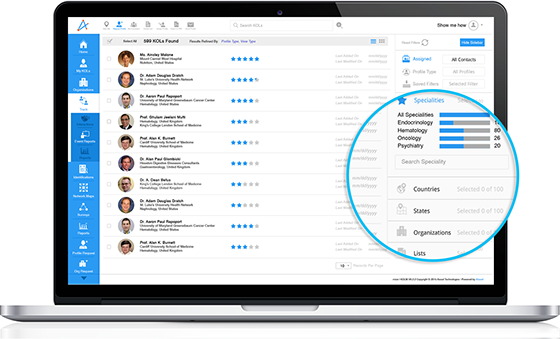22 Jan 2024
Exploring the Life Cycle of Medical Claims

The medical claims process is an important part of a health insurance setting. For healthcare providers, timely and accurate claim submissions ensure a smoother revenue cycle. It enables them to sustain and enhance the quality of care they offer.
On the patient's side, understanding the insurance claims process is essential for financial planning, healthcare accessibility, the coverage their insurance provides, the potential out-of-pocket costs, and the steps involved in claims resolution.
In this article:
Medical claims and their significance in the healthcare system
Medical insurance claims enable patients with insurance coverage to access healthcare services. Its primary purpose is to facilitate payment to the HCOs (healthcare organizations), ensure patients' insurance covers eligible benefits, and manage billing for healthcare costs.
The entire claim process begins when the patient is admitted to the hospital. It captures the journey of a health service until the patient recovers and settles the final bill. It allows patients to utilize their insurance benefits, making healthcare services more affordable and accessible.Apart from the above, claims are a means through which healthcare providers receive compensation for services rendered. It enables them to cover operational costs and maintain quality Patient Care.
Moreover, the claims process also serves as a feedback loop that allows healthcare providers to identify areas for improvement. Analyzing claims denials, for example, can lead to corrective actions that can enhance coding accuracy and reduce the likelihood of future claim rejections.
Stages in the Life Cycle of Medical Claims Processing
-
Submission Phase
Submitting a health insurance claim is critical when a healthcare provider sends a bill to a patient's insurance provider to seek reimbursement for the services provided. A medical claim includes essential details such as the patient's basics like full name, date of birth, address, and National Provider Identifier (NPI) for uniquely identifying healthcare providers. CPT (Current Procedural Terminology) codes (these act as a standardized language) for clearly describing services and aiding communication with insurance providers.
A clean claim, one without errors, facilitates a swift journey through accounts receivable, leading to quicker payment processing.
-
Processing and Adjudication
After a claim reaches a payer, it goes through a process known as adjudication. During adjudication, the payer reviews the medical claim for validity and compliance. The payer assesses how much of the claim is eligible for reimbursement to the provider. This stage is critical as the claim can be accepted, denied, or rejected.
In the case of an approved claim, the payer sends payment along with remittance advice (RA) to the provider. An accepted claim means it has been validated by the payer, but this doesn't necessarily guarantee full payment. Instead, the payer processes the claim based on the terms outlined in their agreement with the subscriber (the patient).
-
Payment or Denial
After adjudication, the payer decides whether to approve (pay) or deny the medical claim. If approved, the healthcare provider receives payment for the services provided. However, if denied, the reasons for denial are typically communicated to the provider. Suspended or rejected claims undergo a review process and are either corrected and paid or officially denied. A rejected claim indicates errors, like missing patient information or incorrect codes, prompting its return to the provider.
The biller may correct and resubmit rejected claims, but this process incurs additional time and costs. If a claim is denied, it is finalized and added to the recipient's denied history record, signifying the payer's refusal to process payment, often due to procedures not covered by the patient's insurance.
-
Appeals
In case of a claim denial, healthcare providers can appeal the decision. This involves providing additional documentation or clarification to support the legitimacy of the claim. The appeals process is crucial for rectifying errors or addressing discrepancies that led to the initial denial.
Individuals have the right to appeal a health plan's denial of covered services through internal and external reviews. Internal appeals should be requested within 180 days, involving the healthcare provider if necessary. If the denial persists, an external review can be sought within the specified timeframe.
The external review is conducted independently, overseen by the state's insurance regulatory agency. If the external review overturns the denial, the health plan must approve the covered services.
-
Patient Payment
The financial responsibility for medical expenses is divided among the patient, their insurance provider (if applicable), and government payers such as Medicare and Medicaid (if the patient qualifies). Patient Payment or patient responsibility denotes the portion of the bill that the patient is expected to pay personally.
Determining a patient's responsibility for healthcare costs involves a step-by-step process. Initially, the deductible plays a crucial role, with the patient responsible for the full cost until it is met. For services with fixed copays, the patient pays a predetermined amount regardless of the overall service cost. Once the deductible is satisfied, coinsurance comes into effect, requiring the patient to contribute a percentage of the service cost. Out-of-network charges may apply if the healthcare provider is not within the insurance network, potentially resulting in additional fees.
If a service is not covered by insurance, the patient is obligated to cover the entire cost. To prevent unforeseen expenses, it is essential to verify insurance benefits before receiving the service. This systematic approach facilitates a clearer understanding of the financial aspects of healthcare services for the patient.
-
Closure and Reporting
In the health insurance claims process, closure represents the point at which a claim reaches a resolution, indicating that the payer has made a final decision regarding payment or denial. Once a claim is closed, further processing specific to that claim concludes. This closure phase is crucial for bringing clarity to the status of individual claims.
Simultaneously, reporting in insurance claims involves the systematic analysis and documentation of data related to the claims process. These reports incorporate various aspects such as claim submissions, approvals, denials, and payment amounts.
Technological Shifts in the Medical Claims Process
The medical insurance claims process has undergone significant technological shifts, revolutionizing how insurers manage and streamline their operations. Automation and Artificial Intelligence (AI) are crucial in accelerating claims validation and fraud detection. They ensure a more accurate and efficient claims procedure.
Electronic Health Records (EHRs) also seamlessly integrate with claims processing systems, streamlining the process and reducing manual errors. Blockchain technology introduces heightened security and transparency to claims processing, eliminating intermediaries and facilitating faster payments with reduced administrative costs.
Mobile health insurance claims processing, facilitated through insurer-provided mobile apps, empowers policyholders to submit and monitor claims on the go. Leveraging AI-powered chatbots, these applications streamline customer service, minimizing human intervention and speeding up claims processing.
Predictive Analytics, an emerging technology, utilizes Data Analysis and machine learning to forecast future trends. In the context of medical insurance claims, it aids insurers in proactively identifying potential fraud hotspots, allowing for preemptive action.
The Impact of Medical Claims Management Software
The integration of technology into insurance claims processing has significantly enhanced the overall customer experience. Medical management software have streamlined insurance companies' claims processing, validating, and approval process.
Technology also has a crucial role in mitigating insurance fraud, a persistent issue causing substantial financial losses to the industry annually. The use of big data analytics has proven instrumental in identifying patterns and anomalies in data, aiding insurers in the early detection and prevention of fraudulent activities.
Mobile apps have empowered policyholders to easily file claims, monitor their status, and receive real-time updates. Such innovations have not only kept policyholders well-informed about their claims but have also minimized the necessity for frequent interactions with insurers for updates.
FAQs
-
Why are medical claims important in the healthcare system?
Medical claims are important as they serve as requests for payment from healthcare providers to insurance companies. They ensure that patients get access to covered benefits and that HCPs/HCOs are reimbursed for services.
-
Why is the Appeals stage crucial in the medical claims life cycle?
The Appeals stage is where healthcare providers and patients can contest denied claims. It allows for the reconsideration of decisions, addressing errors or discrepancies, and ensuring fair reimbursement.
-
How do technological shifts impact the medical claims process?
AI and EHRs (Electronic Health Records) have significantly streamlined and enhanced the efficiency of the claims process. They have reduced manual efforts and improved accuracy in insurance claims processing. This has led to a more secure, transparent, and patient-friendly claims experience.






